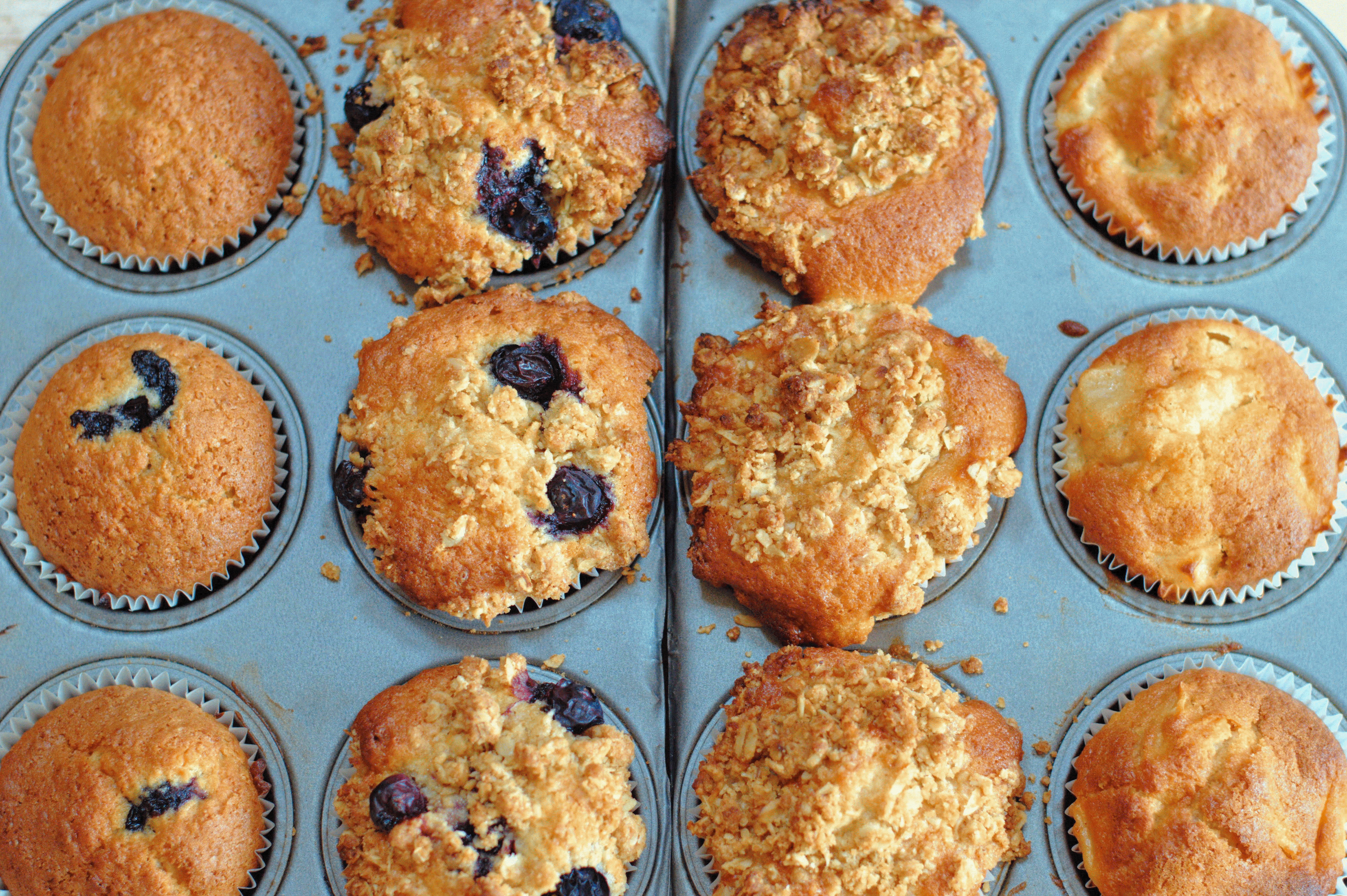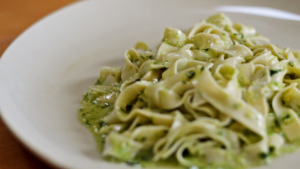Before you say anything, yes, this is a gluten free loaf. Not because I’m trying (and failing) to be trendy, or stirring up some controversy, but because everyone deserves a jam sandwich, every now and again.
Of course, skepticism is understandable. Gluten free is, after all, ubiquitous these days. However it’s still somehow shrouded in mystery and misinformation. It’s ‘out there’ status has left it largely unexplored by mainstream bakers, which is a shame as they’re the people most qualified to understand it!
Instead, we must turn to blogs and websites that pride themselves on making a gluten free version of every thing baked under the sun. Whilst a rather noble goal, it feels like cheating a maths test to me.
Mathematics, as a subject, especially at school, is beautiful. Its a language which we use to discern truth, a light by which we view the very fabric of reality…and most importantly, at school, there’s only ever one correct answer. This fun fact is what makes maths the bane or boon of school life, you either get it, or you don’t.
However, there is a third option.
The ‘got it whilst you don’t’ option.
Its an answer that crops up most regularly during exam season in long mathematics papers. Often times in these papers, you’d be given an answer, in the form of an equation, and asked how you’d get to it. Ideally you would be intimately familiar with that equation from revision, and would have no issue showing how it came to be.
More often than not though, you’d employ the ‘got-it-whilst-you-don’t’ approach.
What would follow is a frenzied deconstruction of given equation all over one’s answer book. You would then sift through the shrapnel of half factorized, twice integrated all complicated nonsense you’d produced, in an to justify how you’d ‘derived’ the given equation. Sadly, since you’d already been given the one correct answer, this tactic would often lead to full marks if you’r reverse engineering was thorough enough.
So instead of using what we knew to get the answer, we’d end up using the answer, to find out what we needed to know.
Just like gluten free baking.
Not with me. Not surprised, but the thing is, the parallel is there. Often times when we know what gluten free thing we’re after, like bread for example, instead of understanding gluten free flours and binding agents and using that knowledge deliberately to produce a desirable product, we’ll instead throw whatever ingredient we can together until we get a desirable result.
But that’s the nature of experimentation, I hear you say. However experimentation, without observation is just data, useless, and that’s the problem with a lot of gluten free recipes. As a baker, I’ve got little to no idea of what constitutes good gluten free baking. This makes me the perfect guide to this alien world. What’s new to you is new to me and what’s new to me gets researched!
To keep things simple then, I’ll today attempt to make a gluten free loaf of bread (pause for applause). Whilst I could start experimenting with all sorts of flour blends, I’m going to be extremely hypocritical and go with a shop bought blend. I assume they’ll have done their homework far more diligently than I ever could, so I’m instead going to play with levening, and binding.
- Can I create, maintain and use a gluten free sourdough starter?
- What can I use that will best replace gluten as a binding agent in my bread?
The aim here was to keep things as natural as possible, maintaining simplicity of technique, and of flavour. I wanted to keep the process intuitive, and the flavours what you’d expect, of grains and of fermentation. Here then, is my gluten free bread experiment, comparing Xantham gum to Psyllium Husk as a binder in an all sourdough leavened, gluten free loaf.
Note regarding ingredient weight and scaling
| flour | 100% |
|---|---|
| water | 115% |
| psylum | 8% |
| starter | 25% |
| salt | 2% |
Note regarding the sourdough starter used
For details on how I converted my regular starter (that is, an equal parts mixture of flour and water housing a stable population of yeast and bacteria) to a gluten free starter, take a look at the sourdough oats experiment. This was an experiment where I simply took a water and flour starter, and fed with oats instead of flour, until over time, the flour concentration was low enough for it to be technically gluten free (less than 20 ppm of gluten)
If you’re not comfortable using (or don’t have access to) a regular starter to create the gluten free one, you can always start one freom scratch using gluten free flour. Any how-to on starting a sourdough culture should do, just remember that gluten free flours tend to be thirstier than usual and so you’ll need to add more water. Keeping the flour to water ratio at about 5:6 usually keeps the starter fluid enough (that’s 120% hydration).
The most important thing to remeber is that it’s starch that’s needed to feed a starter, not gluten, so attaining an active, gluten free starter shouldn’t be a problem for you (as it wasn’t for me)
Or, just use died yeast! 😀
With that ramble over, you’ll find the recipe with all measurements and techniques used, below.
Prepare the dough
Mix all your ingredient in a bowl until a shaggy mass forms. (2 minutes)
- 400g plain white gluten free flour (Dove’s Farm is what I usedi)
- 460g water at finger temperature (35-38°C)
- 30g Psyllium Husk
- 100g gluten free sourdough starter (110% water to flour, fed 24 hours prior) OR 7g of dry yeast (1 sachet)
- 1tsp/6.25g salt
Let the dough rest so that the flour fully absorbs the water (20 mins)
This will reduce the amount of kneading required later on thanks to the autolisis process.
Knead the dough, just to ensure everything’s properly mixed (1-2 mins)
There’s no need for intensive kneading here. No gluten means no kneading remember.
Cover the dough with cling film, or tub with a lid and ferment at room temperature ( ~ 1-2 hours )
Transfer dough to the fridge after it’s fermented a bit so it can rise overnight ( 8 – 12 hours)
The next day, the dough can be transferred to a baking tin and allowed to prove before baking.
After the overnight fermentation
Line a loaf tin with gluten free flour.
Transfer the dough from its container and shape into a loaf [ 3:40 – 3:55]
The dough shaping produces tension over the dough’s surface
Transfer the shaped dough to a loaf tin and cover with cling film. Let it prove in a warm spot ( 1-2 awr )
If your kitchen is cold, and time’s short, heat your oven to 30°C, turn it off and chuck the loaves in. This will get you down to 30-60 mins proving time. I do suggest though that you use a digital thermometer for this. Home ovens can vary between ± 20°C from what the thermostat reports (which is enough to kill your dough).
Half an hour before the dough’s done proving, preheat the oven to 240°C
To be fair, it’s a bit more difficult judging when a gluten free loaf’s done, or close to done, proving. I’ll usually see if a finger pressed to it leaves a mark, but this was a stiff dough, so really I just let it sit for the hour and hoped for the best!
Remove the foil covering the loaf and score it. Slicing it’s skin will better control the loaf’s expansion (and make it look cooler).
Seal the tin again and bake at 200-180°C ( 10 mins with steam, 15 mins without )
Sealing the dough and adding steam keeps the skin moist and prevents a crust forming too soon. One way I do this (in addition to sealing the loaves) is by pouring boiling water to a hot pan on the oven floor. This keeps the oven air humid, just in case the dough’s own steam trapped by the foil isn’t enough.
Remove the loaf from the oven (the loaf should have an internal temperature around (205°F / 96°C)
Remove the loaf from its tin and allow it to cool completely.
Cooling the loaf is necessary to allow the loaf to bake fully.
Mwy i drio
For a behind the scenes as to what inspired this Honey and Oat loaf , check out the Sour Oats experiment over in The Lab, or for almost gluten free bread to get you started, try our Honey and Oat Sourdough to get more of a feel for gluten free starters.



